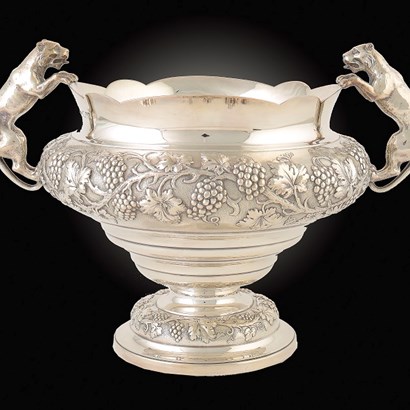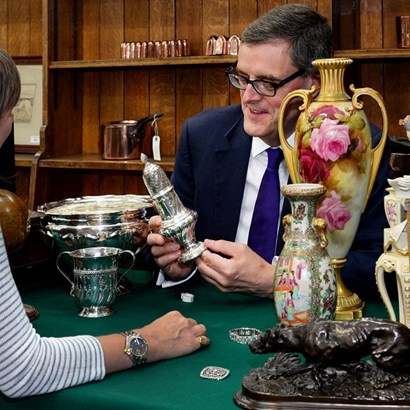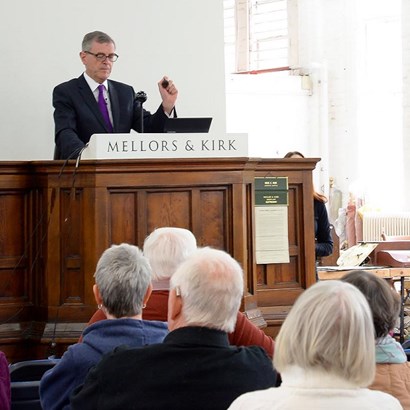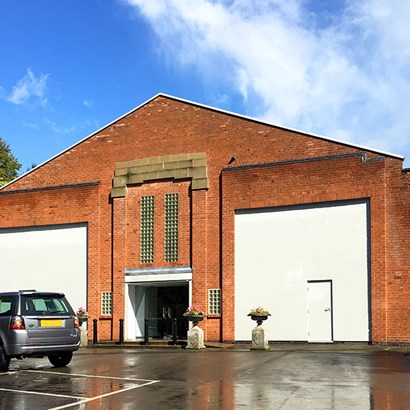Auction Insights
Wedgwood
Philanthropist Felix Joseph was one of Nottingham’s greatest benefactors. As the much criticised Castle is about to be transformed at a cost of £30 million his wonderful collection should be put centre stage.
The often heard criticism of Nottingham Castle is that, er, it isn’t sufficiently castle-like. Instead of grumbling about this, as did one Post reader who recently advocated the Castle’s demolition and replacement with a modern, suitably medieval pastiche in order to drum up visitor trade. We should rather go all out to create a world class modern museum that will attract visitors without spending a fortune on clever marketing. Is not the palatial 17th century ducal mansion in its amazing location something which any forward thinking European city would rightly be proud?
So should we, and also for several of the extraordinary works of art and collections you can see in the heart of the city.
Those collections are still being added to, by occasional purchase (almost always grant aided) or by gift. Astonishingly, Felix Joseph (1840-1892) he left it, specifically the Castle Museum, his great collection of Wedgwood pottery, one of the two or three finest ever formed. Many of the huge 1400 piece collection are unique and most of it is 18th century.
Joseph was a passionate and wealthy collector possessed of an inherited fortune who supported a host of good causes, mainly it would seem anonymously. He made a succession of gifts to the Castle, or The Midland Counties Art Museum as it was known, over a period of about 20 years. When the Museum was opened by the Prince and Princess of Wales in July 1878 it became the first municipal art gallery in the UK. Joseph believed the growth of regional museums would lead to better standards of industrial design throughout the country. He saw the museum’s role as educational and Nottingham’s was to be, in his words “A museum second to none.”
He was just one of several distinguished 19th century collectors of Wedgwood Jasperware including Lord Lever, founder of the famous Lady Lever Art Gallery at Port Sunlight, Prime Minister W E Gladstone and several American plutocrats.
For many years one of the leading London auctioneers would bill their sales of pottery and porcelain “British Pottery and Wedgwood” because of the pre-eminent status of Wedgwood amongst collectors, even as late as the 1970s.
In the 18th and 19th centuries Wedgwood made many different types of pottery. All of them were of high quality and every piece is simply marked with the Wedgwood name. That name is above all synonymous with blue and white Jasperware, invented by Wedgwood. Josiah Wedgwood was a practical potter with a keen sense of good design who would never sell his wares too cheaply believing that their quality represented good value for money. His customers were the aristocracy, even royalty, but especially the ‘better sort’ of the fast expanding middle class. The Joseph Collection includes everything from vases to coat buttons, clocks to sword hilts, scent bottles and even earrings. The diversity is breath-taking. It even includes one of the incredibly rare 1790 first edition copies of the famous Portland vase. The priceless ancient Roman glass original belonged to the Duke of Portland who, surprisingly in view of its huge value, allowed Wedgwood to borrow it for the purpose. Many items in the Joseph Collection are examples of ‘three-colour’ Jasper which are some of the most pleasing to the eye. Such pieces were much more costly and are rarely seen. Very occasionally the Jasper reliefs were fashioned, or sharpened, by highly skilled hands as distinct from merely being applied or ‘sprigged’ a Potteries term for the technique.
The dating of Wedgwood can seem confusing because similar items were made for over 150 years and the mark remained basically the same. Those made before about 1840 are generally finer and with a little experience can be easily spotted, but even a collector as knowledgeable as Felix Joseph made a few mistakes and the Collection contains several pieces of the 1870s which I think he would have bought as dating from the 1780s!
Next week Mellors & Kirk will sell four fine 18th century Wedgwood portrait medallions of George Washington, the American William Franklin, architect James ‘Athenian’ Stuart and Admiral Keppel which if he’d been alive Mr Joseph would have been amongst the bidders. At a predicted £200-300 there is bound to be a lot of interest.
Creating a vibrant museum for the benefit of all ages and all people, local and visitors alike is now a real possibility. There is no alternative but to get this right because the museum is too important to be allowed to go the same way as the Library. Major change brings opportunities, vision and yes, money will have to be found. I hope those in charge of delivering a ‘new’ Castle Museum (no pun intended) will succeed. To do so there must be no hint of elitism in newly configured imaginative displays that are cleverly lit and clearly labelled, without gimmicks. People of all ages and backgrounds when treated as simply curious intelligent human beings, provided with easy and cheap or better still, free access will follow. York Art Gallery has many similarities with Nottingham Castle and has recently reopened after a lengthy refurbishment. It is a stunning example of how a modern museum should be. Who knows, there might be another munificent benefactor out there, a Felix Joseph for our time?
< Back to Auction Insights



